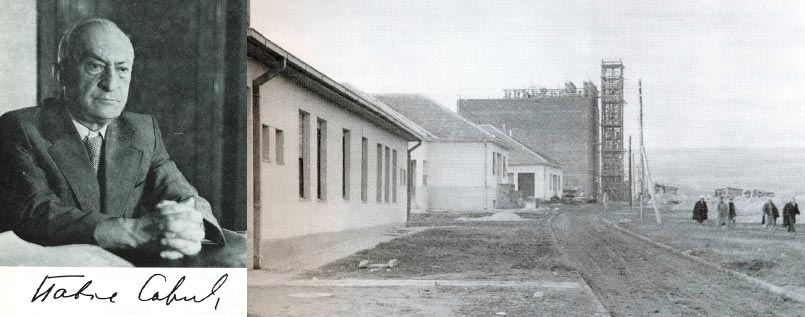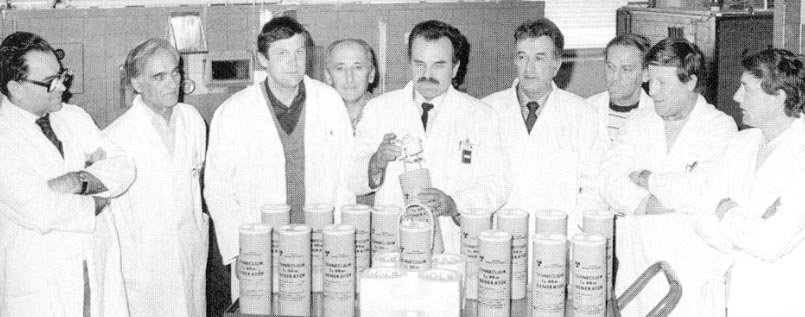 Founded in 1948 Vinča Institute of Nuclear Sciences has been the most prominent multidisciplinary research institute in the Republic of Serbia. The task to etalblish the Institute as a scientific center for the study of the most contemporary topics at the time in basic natural sciences - physics, chemistry and biology was assigned to professor Pavle Savić, a physicochemist. Professor Pavle Savić had established in a research career working together with Nobel Prize winners, Irene Joliot-Curie from 1935 to 1939 at Institut Radium and Peter Leonidovich Kapice at the Institute of Physical Problems in Moscow from the last year of the Second World War up to his return to Belgrade.
Founded in 1948 Vinča Institute of Nuclear Sciences has been the most prominent multidisciplinary research institute in the Republic of Serbia. The task to etalblish the Institute as a scientific center for the study of the most contemporary topics at the time in basic natural sciences - physics, chemistry and biology was assigned to professor Pavle Savić, a physicochemist. Professor Pavle Savić had established in a research career working together with Nobel Prize winners, Irene Joliot-Curie from 1935 to 1939 at Institut Radium and Peter Leonidovich Kapice at the Institute of Physical Problems in Moscow from the last year of the Second World War up to his return to Belgrade.
Building the "Institute for the Testing of Matter", as he called it, or the ligal name “Institute of Physics”, Pavle Savić devoted all his strength, will and dedication. He had overseen all the most important tasks from the begining. He designed and monitored the construction of most initial laboratories (for physics, chemistry and biology) living on the farm close to building site and sleeping on straw in the amber. Based on his effort and expertise soon after construction work was done, he provided the institute with instruments for scientific research, on account of war reparations.
He gathered in the Institute former young scientific elite of Yugoslavia, mainly from enthusiastic experts who had just finished their education. Research was conducted in contemporary topics of physics and chemistry, giving recognizable contribution to the so-called "nuclear age". A few years later Dusan Kanazir biologist, joined the institute, establishin research topics primarily related to the effects of radioactive radiation on human body. Both Kanazir and Savic were later president of the Serbian Academy of Sciences and Arts.
Shortly after the start, the institute was dedicated to the realization of the state nuclear research program, which was completed in 1968.
Today “Vinca” Institute of Nuclear Sciences is leading institution for high-quality science in Serbia, a place where multidisciplinary approach to research is enabled by its internal organization and established practices. More then 500 researchers and Ph.D students working on multidiscplinary projects in fundamental and applied research govern by idea from innovation to commercialization through technology development projects. Research at the Institute covers the following areas: physics, chemistry, biology, power engineering and technology, radiation and environmental protection, production of radiopharmaceuticals, accelerator science, and nanoscience.




